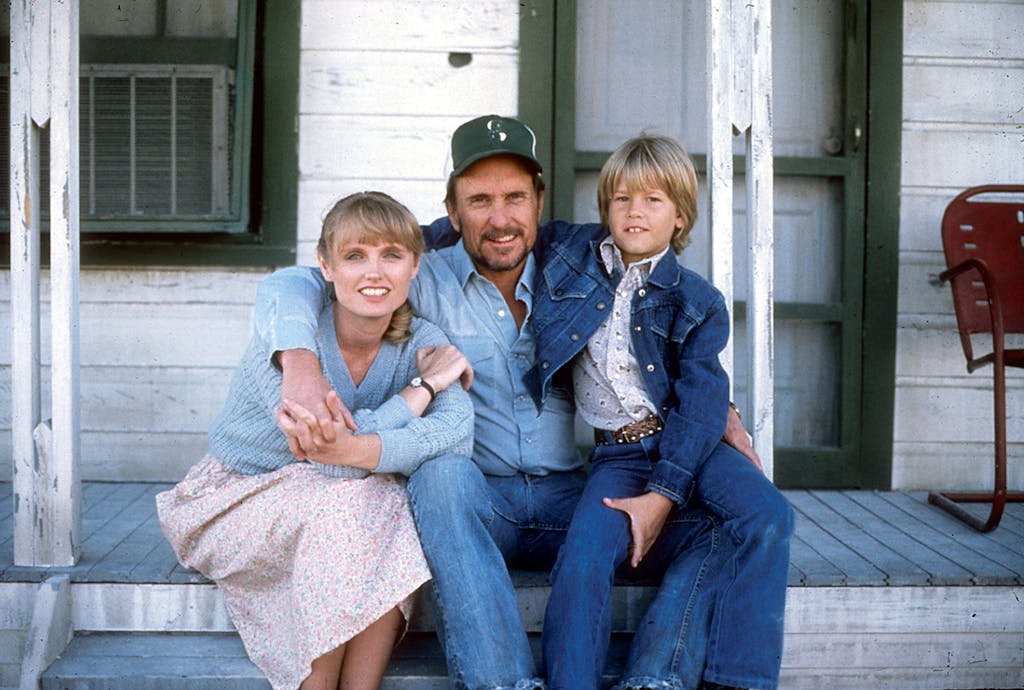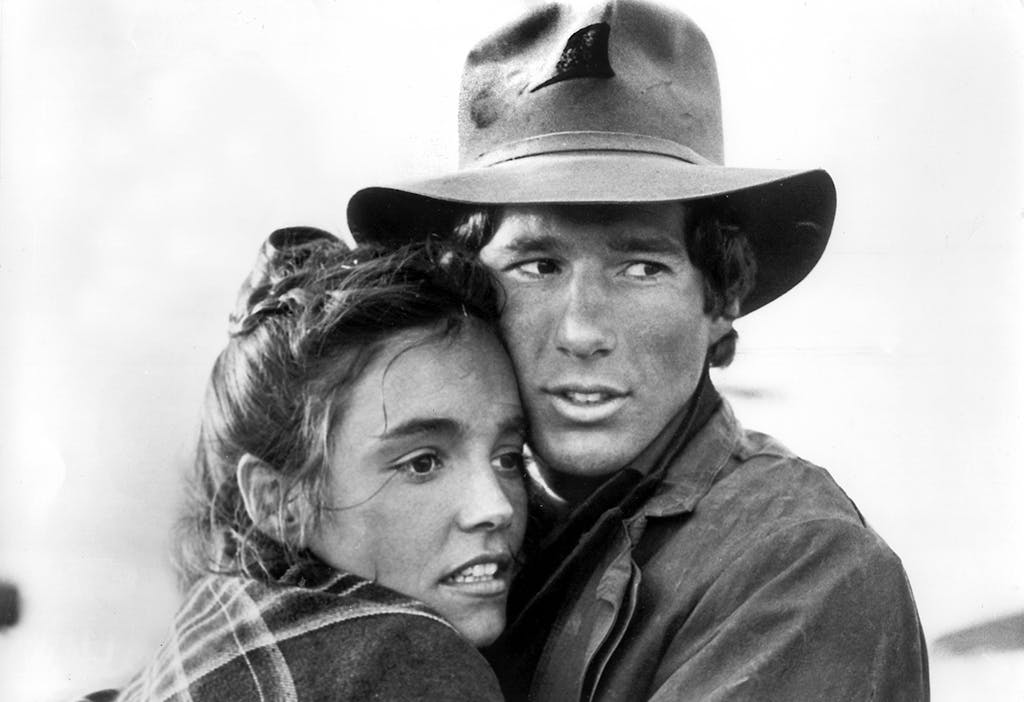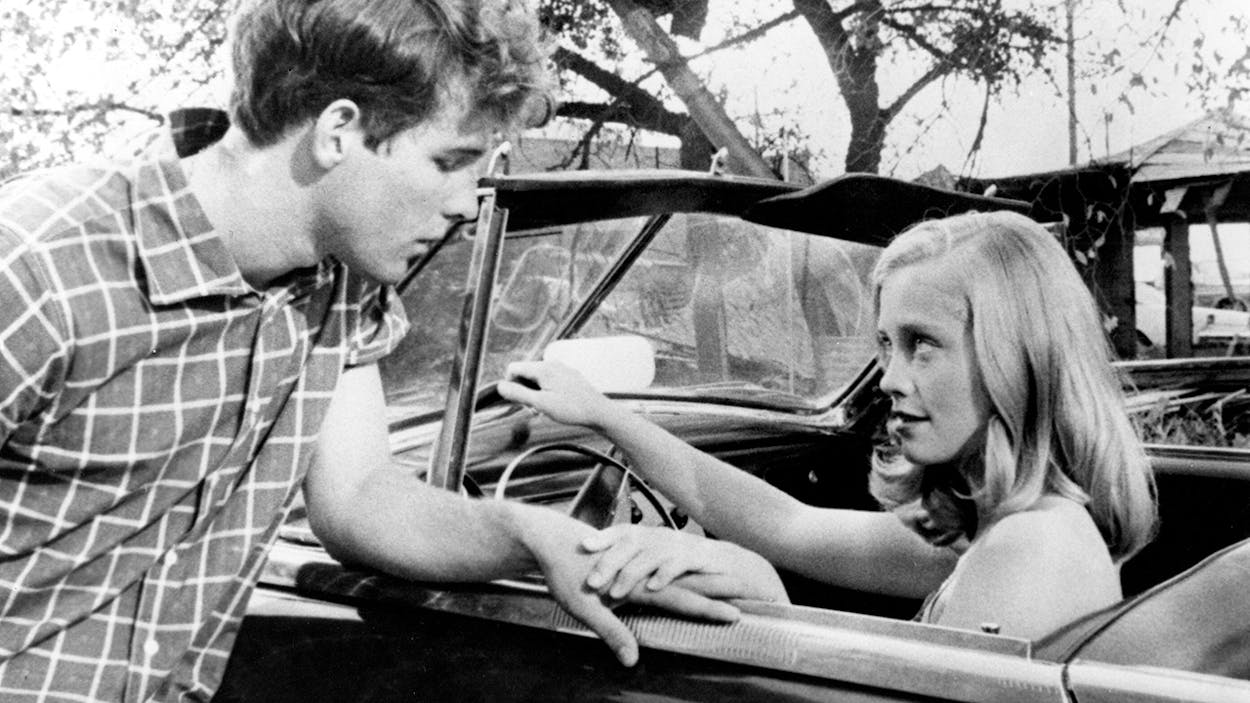Suppose one of those Californians who are moving to Texas in droves were to ask a bona fide Texan which movies he or she should see in order to acquaint him or herself with the ethos of the state. What might one suggest? Lonesome Dove instantly comes to mind. But technically that’s not a movie, and furthermore, it’s only right to read Larry McMurtry’s book first. How about Giant? Well, that one’s three and a half hours, and folks, attention deficit disorder is real. Friday Night Lights! Is it really smart to promote football in this era of traumatic brain injuries?
The fact is, the case could be made for any number of films, according to Texas Monthly writer John Nova Lomax’s highly scientific article “Mapping the Best Texas Movies.” But for the Heart of Texas Series, hosted by the Dallas historic movie houses, the Texas Theatre and the Majestic Theatre, there are four movies set in the state that top the bill. They are, in order of screenings, Bonnie and Clyde (1967), The Last Picture Show (1971), Tender Mercies (1983), and Days of Heaven (1978). All share an essential trait, which could be described as “feel”—or a certain Texan ambience.
“None of these are high-concept plots,” says Barak Epstein, the president of Aviation Cinemas, the company that manages the Texas Theatre, opened in 1931. “They’re mostly love stories, with tragedy and sadness. And why they’re interesting is because of the tone. Not necessarily because we’re trying to figure out the story—not that story isn’t important—but often it’s a combination of setting and craft and how they were made.”
Epstein conceived the series with Michael Schwedler, the general manager of the Majestic, which opened as a vaudeville theater in 1921 and is now operated by the City of Dallas. Each of them compiled a list of potential movies to include. Epstein picked The Last Picture Show, nominated for eight Oscars, in part because the Texas Theatre, in six years under new operation as an indie and repertory cinema, has never shown it, and Days of Heaven, nominated for four Oscars, because of its cinematographic excellence. Schwedler, meanwhile, gravitated to Bonnie and Clyde, which received ten Oscar nominations, because the real-life story reminded him of his childhood and Tender Mercies, with four Oscar nominations, because Robert Duvall’s character so moved him. The first two films will be shown in 35mm format, in gloriously grainy imperfection, with the last two screened in digital format.
The seminal film Bonnie and Clyde depicts the real-life sweetheart gangsters who met in Oak Cliff during the Great Depression. Produced by Warren Beatty, who starred as Clyde Barrow alongside Faye Dunaway as Bonnie, it marked a turning point in Hollywood cinema and took risks that inspired a new era of films including Easy Rider, Taxi Driver, and Apocalypse Now. One of director Arthur Penn’s strategies for authenticity was to film in and around locations where the actual Bonnie and Clyde roamed. Penn also didn’t pull any punches on the violence of the story.

Shown from left: Michael J. Pollard, Gene Hackman, Gene Wilder, Faye Dunaway, Evans Evans, Estelle Parsons, Warren Beatty
“I love the gritty depiction of Depression-era North Texas,” Schwedler says. “Bonnie and Clyde were very real characters to me growing up here. We romanticized their outlawry and the legend of the ambush in Louisiana where they were killed. The film was groundbreaking in many ways, but the realism, especially in the ambush scene, is what people remember.”
A film series about Texas is not complete without a Larry McMurtry story. Hud and Terms of Endearment definitely qualify. But The Last Picture Show was sentimental to Epstein. Just as the teens in small-town Archer City were drawn to the Royal Theater for an escape, so too was Epstein drawn to the Texas Theatre. In 2010 he and his partners took over the one-screen movie theater on the outskirts of Oak Cliff. The venue was owned for a brief spell in the thirties by Howard Hughes, the eccentric Renaissance man born in Humble, and it was where Lee Harvey Oswald was watching War Is Hell, when the Dallas Police Department apprehended him after the assassination of President John F. Kennedy in 1963.
The movie is based on McMurtry’s book of the same name, which is in turn loosely based on his hometown. The Last Picture Show was a breakout pic for director Peter Bogdanovich, who went on to make Paper Moon, Daisy Miller, and Mask. It was filmed in Archer City, with an ensemble cast including Timothy Bottoms, Jeff Bridges, Cybill Shepherd, Ellen Burstyn, and Cloris Leachman alongside extras played by locals. The decision to shoot the film in black and white pays off in 35mm, with the sharp contrast of the two shades.
“It has this slow-moving beauty where it’s like this kind of Texas theme of maybe a little bit of isolation and just capturing a bit of the beauty of stillness in certain parts of Texas,” Epstein says.
Tender Mercies was filmed in the wide-open spaces of Waxahachie to convey a sense of loneliness. Its lackluster performance at the box office did not equate to its critical acclaim. Of all the memorable movie roles Robert Duvall has played, his depiction of Mac Sledge, a dried-up country singer who finds purpose in a widow and her young boy, is the only one to win him an Oscar for best actor. The movie also earned Wharton native Horton Foote an Oscar for best original screenplay. (Presumably, he placed it next to his other Oscar, for best adapted screenplay for the film To Kill a Mockingbird, in which Duvall coincidentally appeared, playing Boo Radley.)

Shown from left: Tess Harper, Robert Duvall, Alan Hubbard
“Tender Mercies is Robert Duvall at his very best,” says Schwedler, who is the former drummer in the hardcore bluegrass band Killbilly. “He spent a lot of time traveling around Texas playing in country bands in preparation to sing the songs in the film, and it makes the music sequences believable and genuine, which is rarely the case in films about musicians.”
The final film in the series, Days of Heaven, is an early work of the mysterious Texas filmmaker Terrence Malick, who is infamously wary of being interviewed. Malick released his first film, Badlands, in 1973, starring Martin Sheen and Sissy Spacek as modern-day Bonnie and Clydes, and five years later he released Days of Heaven, a love triangle in the Panhandle involving Richard Gere, Sam Shepard, and Brooke Adams. And then Malick disappeared, only to return twenty years later with a string of films, including The Thin Red Line, The Tree of Life, and the forthcoming Song to Song, which will have its world premiere at SXSW this year. But in Days of Heaven, it’s the movie’s cinematographers, Nestor Almendros and Haskell Wexler, who steal the show.

Shown from left: Brooke Adams, Richard Gere
“Arguably, Days of Heaven is the best shot movie of all time,” Epstein says. “I can’t think of many movies that are more visually interesting and have as many classic images in them—the shot of the locusts flying from the sky and some of the wide shots of the trains—as Days of Heaven does.”
Now, if that same California interloper were to ask said Texan what these movies have in common, there are a couple of answers that could apply. For one, there is a variety of understated performances. Then there’s the music, from the Hank Williams songs in The Last Picture Show to Ennio Morricone’s score for Days of Heaven. The timeless images of the Texas plains and the old architecture also apply. And then, as Epstein points out, there are some really good cowboy hats.
Texas Theatre and Majestic Theatre, March 12 to April 23, thetexastheatre.com
OTHER EVENTS ACROSS TEXAS
DALLAS
Hecho en Mexico
A border wall may well keep Mexican immigrants out of the U.S. but the spirit of Mexico will likely always find a way in. Embrace this multiculturalism at México 1900–1950: Diego Rivera, Frida Kahlo, José Clemente Orozco, and the Avant-Garde, featuring nearly two hundred works in a variety of mediums that document Mexico’s artistic Renaissance during the early twentieth century. The exhibit’s only U.S. stop is at the Dallas Museum of Art.
Dallas Museum of Art, March 12 to July 16, dma.org
FORT WORTH
Hot to Tot
French fries are great and all, but they’re mostly restricted to lunch and dinner, whereas tater tots are acceptable at every meal and go especially well with eggs and bacon. At the Tater Tots and Beer Festival, sample eight permutations of the fried nugget and then wash them down with offerings from nearly thirty different breweries.
Gateway Park, March 11, 3 p.m., tatertotfestival.com
HOUSTON
View from the Bayou
Forget about the competition aspect of the Buffalo Bayou Regatta, or the fact that you have little to no experience maneuvering a canoe or kayak, because the fifteen-mile race, now celebrating its forty-fifth year, caters to amateurs as well as veterans and allows unparalleled views of the city, both natural and man-made.
March 11, 9 a.m., buffalobayou.org
PLANO
On the Fly
There’s no need to book an expensive trip to Montana to go fly-fishing because there are plenty of opportunities to angle for a large-mouth bass in the warm waters of Texas. At the inaugural Texas Fly Fishing and Brew Festival, novices learn the basics and regulars perfect their skills. And then together they enjoy craft beer offered up by four breweries, including the Dallas-based Four Corners and Texas Ale Project.
Plano Center, March 11–12, 9 a.m., txflyfishingfestival.org
SAN ANTONIO
Violet Reign
When doves cry, as they are wont to do when a prince dies, musicians are bound to convene—as a youth symphony orchestra, a Grammy-winning mariachi band, and all manner of pop and rock players will at their hometown Tobin Center for “Purple Rain Live”—and say, hey, let’s go crazy, and proceed to play Prince’s Purple Rain album in its entirety.
Tobin Center, March 13, 8 p.m., tobincenter.org
- More About:
- Film & TV
- San Antonio
- Plano
- Houston
- Fort Worth
- Dallas






